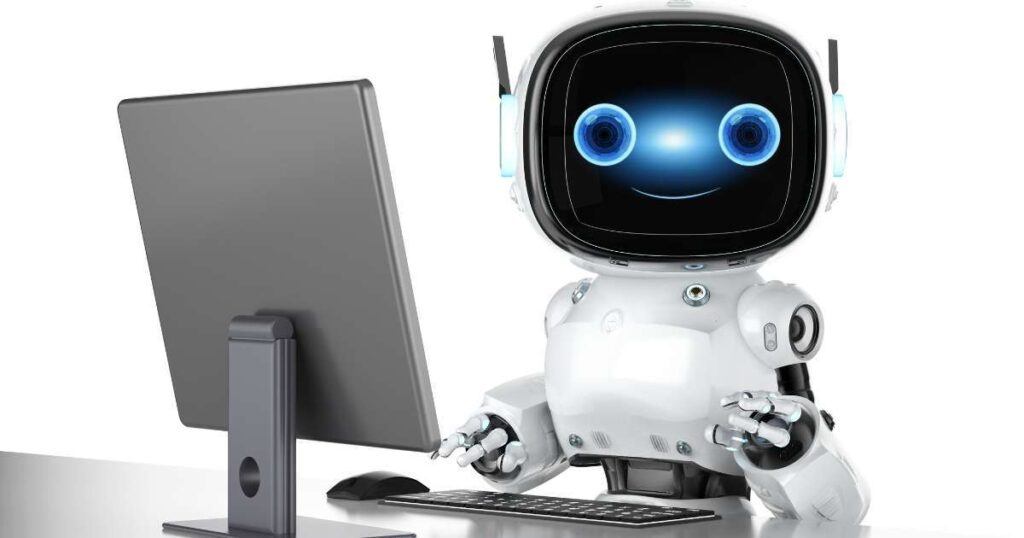Everything You Wanted to Know About How AI Reduces Business Costs But Were Afraid to Ask

With all of the excitement for AI in the news, you may find yourself wondering, “How does AI reduce costs?”. AI has many business applications, from the flashy to the shockingly mundane. While there’s no way to know upfront how AI can transform your business, here are three broad ways AI reduces costs:
#1. AI Can Reduce Operating Costs
The largest realized promise of artificial intelligence is in minimizing operating costs. This is typical in large-scale production and any business concerned with logistics. AI is exceptionally good at considering a host of possibilities and picking a great one. This presents itself in many ways:
- Finding the best layout of patterns on raw materials, minimizing material cost
- Laying out a factory floor to reduce travel time between stations
- Scheduling employee shifts
- Reduced Warehousing Costs with Just-in-Time processes
AI’s oldest, most battle-hardened capabilities are in planning and scheduling. It is superhuman in its ability to list possible plans, compare them, and cherry-pick the best. AI doesn’t get bored. It doesn’t get tired. AI doesn’t have preconceived notions about ridiculous ideas. It will mechanically try everything, then pick the best options.
This doggedness means it can plan, schedule, and predict at superhuman levels. So long as we invest enough resources in modeling our world accurately. This is either accomplished with big data or developers who model the world.
#2. AI Increases Productivity
AI also minimizes operating costs by reducing the labor needed to get the same outcome. When people hear this, they immediately jump to the idea that AI will replace them. In some limited areas, this may be true, but it’s not generally the case.
Where AI replaces a human, the largest gain is in uptime. Humans don’t like to work at all hours, and hiring second and third-shift work comes at a premium cost.
The more common case is that AI improves the productivity of human workers. This comes in a variety of flavors:
- 80/20 Rule
- The AI handles the easy cases
- the humans take the hard ones
- AIs check Human output / Humans check AI output
- Minimizes rework
- Minimizes time-to-delivery for rework
- Improves total accuracy
- AIs take over mundane tasks, leaving humans only complicated value-adding work
These improvements have obvious business value, but require an upfront investment and strategy to ensure you build the right thing. In particular, it incurs development costs and training costs. While there are general patterns of AI applications, no two deployments are the same. Some customization is needed, and that begets specialized development and training.
#3. By reducing turnover/churn
Churn is an unavoidable expense of any business. Whether it be employees or customers, turnover hurts. AI can help with churn, both in employee and customer, in several ways:
- Increasing engagement
- Classifying Individuals Into Cohorts for Tailored Content
- Automatically Generating Content per User at Scale
- Predicting Churn
- By employees likely to leave and why they’re likely to leave
- By identifying where classes of customers churn
- By predicting if an individual customer will churn and suggesting interventions
- Reducing Onboarding Costs Using Intelligent Agents
Enthusiasm about these possibilities needs to be cautious. Building personae, or classes of individuals, in business contexts is necessary. However, we’re necessarily choosing to see a person as a representative of a group rather than an individual when we do so. We have to take care that we don’t lose sight of the person and their context, lest we offer them things they don’t need, or worse, offend them.
Like putting people into neat little boxes, putting machine-generated content in front of users is useful, but dangerous. Would you let a newly onboarded employee speak on behalf of the company? Even if it were their job, it would be foolhardy to do so. So too with generative AI. When you start out, check its work before you put it in front of customers. Build trust before you let it run on its own.
Tempering Expectations
So, can AI reduce your business costs? Yes! It can reduce your costs in myriad ways, each with its own set of trade-offs.
- Fielding any new technology has a cost
- Reducing human touch points can make your offering feel impersonal, reducing engagement
- Minimizing anything (warehousing, staffing, etc) amplifies any disruption
These trade-offs are better thought of as investments towards future efficiency. The question isn’t “Is AI the right call for you?”, it’s “Is AI the right call right now?”. Maybe; it’s impossible to say without further investigation. If you need help getting started, or evaluating where the right place to dig in is, please reach out to us.
Unlock the Power of AI Engineering
From optimizing manufacturing materials to analyzing and predicting equipment maintenance schedules, see how we’re applying custom AI software solutions.
You Might Also Like